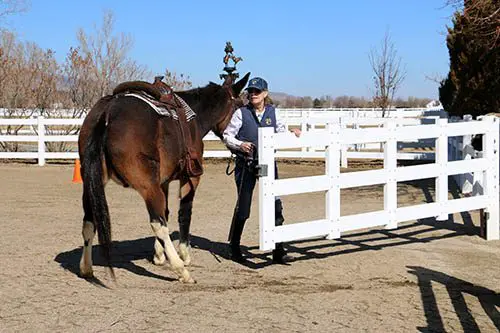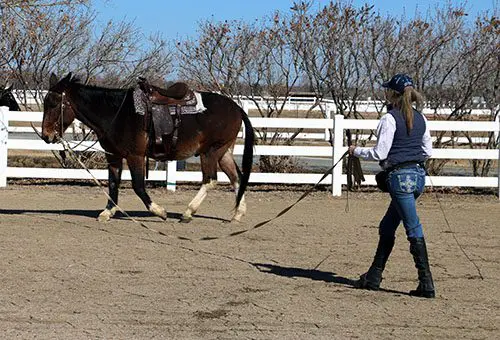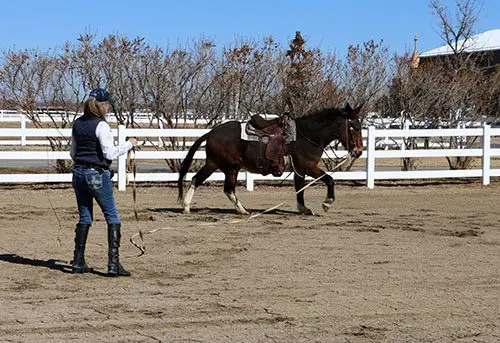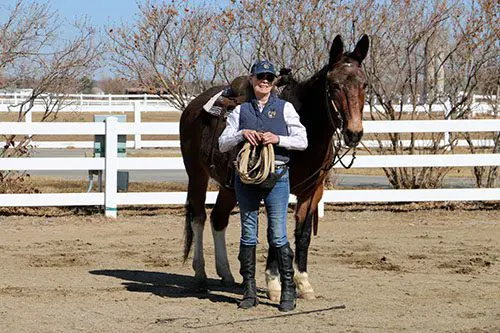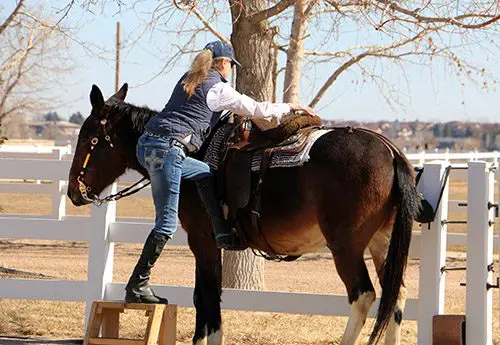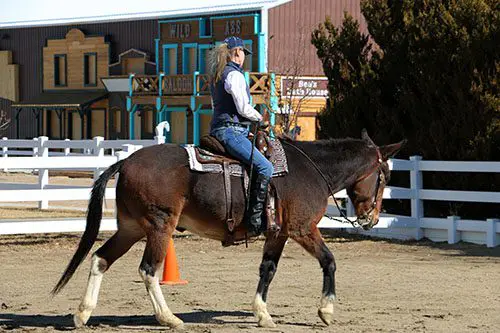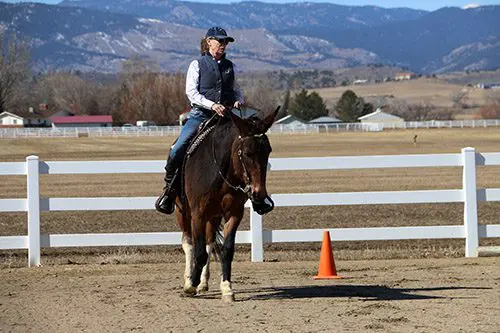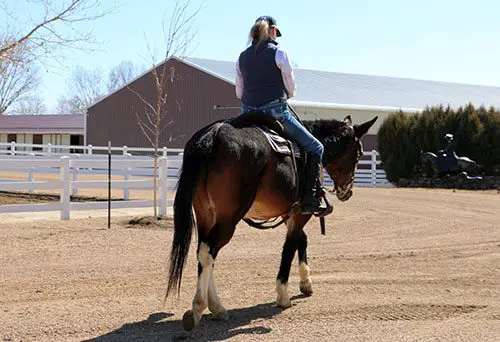LTR MULES: Learning with Lancelot 3-5-21
By Meredith Hodges
Longears thrive with a routine management and training program. Their performance and longevity is greatly increased. Sir Lancelot is now a 27-year-old ranch mule that has had the benefit of my management and training protocol. Done over two years when he was much younger, the result of his postural core strength leading exercises, lunging, ground driving and later riding in my postural “Elbow Pull” self-correcting restraint is apparent in his youthful enthusiastic attutude and body structure. Since, I did not show Lance, I had no need to make the transition from the Eggbutt snaffle bit to the curb bit. He was extremely responsive in the snaffle bit all these years. Today, we are going to make the transition to the curb bit and document it as an addition to our training series.
Lance executes the gate perfectly! He stands quietly while I put on the “Elbow Pull with the curb bit that conveniently has a crosspiece connecting the two ends of the shanks where I can run it through (instead of running it through the snaffl rings as I did in the snaffle bridle). Commonly, the equine will raise his head during his first introducion to the curb bit. Lunging in the “Elbow Pull” will remind him of his good posture with the addition of the new bit.
Lance starts to raise his head, but almost immediately resumes his good posture. The “Elbow Pull” goes loose and he moves out nicely at the trot.
The canter poses no problem at all. Lance stands quietly after being called to halt while I change lungeline to the new side of his face.
Lance remains on the arc of the circle with a squeeze from closing my fist as his outside front leg comes into suspension, maintaining his balance and bending correctly through his rib cage as he first learned in the Round Pen.
Lance steps well underneath his body and maintains the critical upward balance intiated by hind quarter engagement.
Lance waits patiently as I roll up the lunge line, remove the “Elbow Pull” and then follows me obediently to the gate.
The mounting block was new, but he didn’t mind! He knows how to stand still. He followed my seat easily around the first turn, bending appropriately through his rib cage while staying erect in his posture around the cone.
I kept my hands in front of the saddle horn. On the straight lines I alternated leg pressure from side to side. Through the turns, I lightly squeezed/released the direct rein while continuously nudging the opposite side with leg pressure from my leg. Otherwise, I kept my hands quiet. Lance remained in good equine posture.
I verbally counted to Lance as he negotiated the Hourglass Pattern. On straight lines, I matched my alternate leg pressure with the verbal command, “One-Two, One-Two…” and on the turns, I matched the one-sided leg pressure with, “Two-two, Two-Two…” He halted with his hind quarters still engaged.
Lance kept his mouth quiet and responded well to my leg pressure with hardly any movement necessary on the reins. We finished with a bow (He really likes to bow!)! He then stoood quietly and waited for my next cue.
Lance was so proud of himself! When you take the time to break things down into very small steps so your intent is clear and concise to your equine, it is easy to successfully make the transition from one thing to the next during training, even when going from the snaffle bit to the curb while maintaining the same light and responsive contact with your equine’s mouth. Although it may take more time, the journey and the end result is much more relaxed and enjoyable. One learns to appreciate the “little” victories along the way. In turn, our equines appreciate US because they know in no uncertain terms that we have their best interest at heart and are the ones that keep them healthy and comfortable. This makes for a deep and abiding, everlasting partnership!



